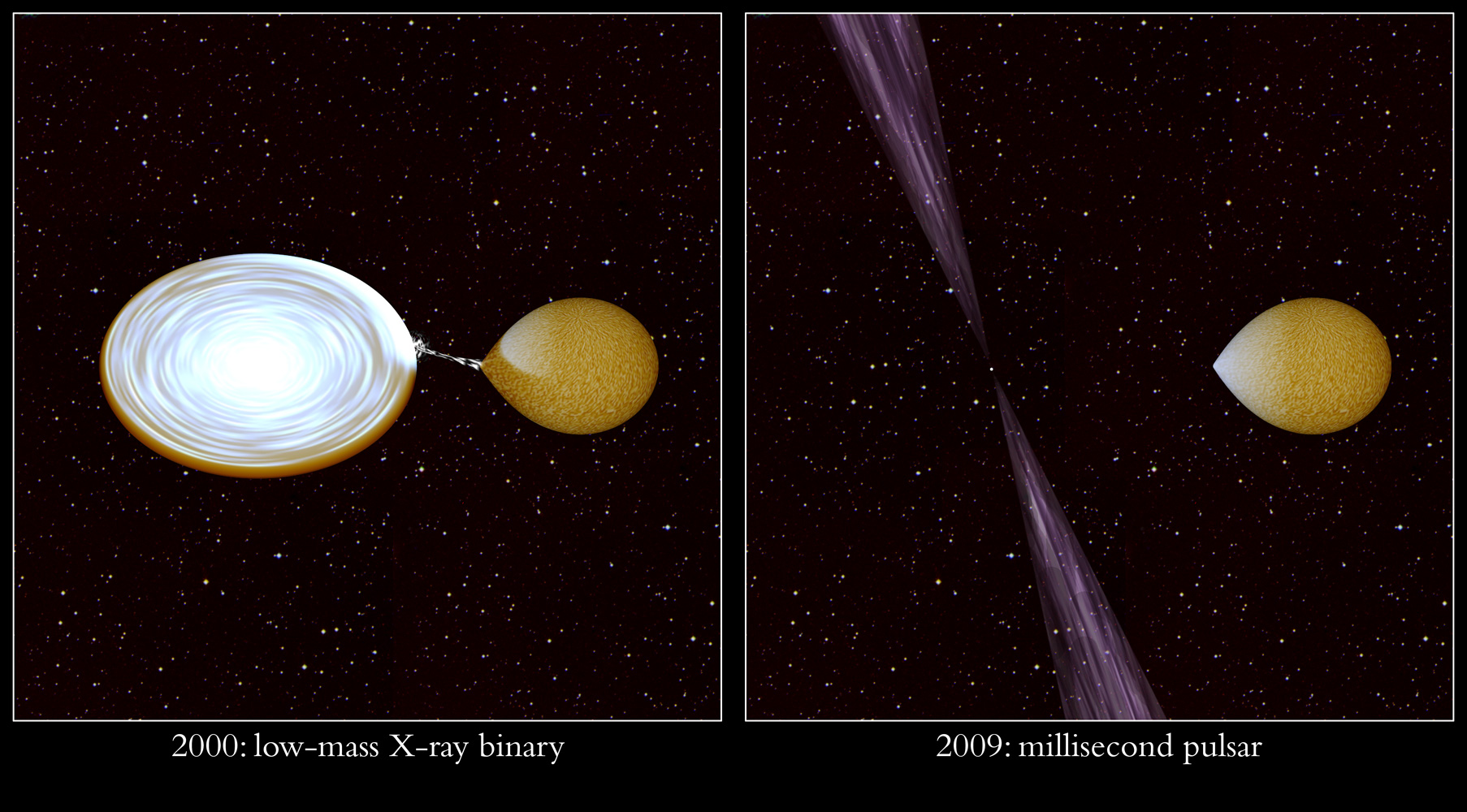Daily Image
25-05-2009Discovery of a Missing Link
| Submitter: | Joeri van Leeuwen and Jason Hessels |
| Description: | As part of an international team of astronomers, ASTRON astronomers Jason Hessels and Joeri van Leeuwen have discovered a unique binary star system. This new system is a "missing link" in the process that creates the fastest-spinning stars in our Universe: millisecond pulsars. The team's results were pre-published in the May 21st online edition of Science (Archibald et al. 2009; press release). "Some pulsars rotate hundreds of times a second. We believe that this fast rotation is caused by a companion star dumping material onto the neutron star and spinning it up", said van Leeuwen, from whose observations the characteristics of the pulsar's orbit were determined. The material from the companion forms a flat, spinning disk around the neutron star, and during this period, the radio waves characteristic of a pulsar cannot be observed. As the amount of matter falling onto the neutron star decreases and eventually stops, the radio waves can emerge, and the object is observable as a radio pulsar. This sequence of events is apparently what happened with a binary-star system some 4200 light-years from Earth. In 2000 archive data the variable sun-like star in this binary star showed evidence for an accretion disk surrounding a neutron star. In 2007 there was no longer any evidence for an accretion disk when a millisecond pulsar, rotating 592 times a second, was discovered with NRAO's GBT. "No other radio millisecond pulsar has ever shown evidence for an accretion disk," says Hessels, who used low-frequency observations with the Westerbork Synthesis Radio Telescope to study the gas still orbiting in the system (cf. tomorrow's AJPOD). "We know that another type of binary-star system, called a low-mass X-ray binary (LMXB), also contains a fast-spinning neutron star and an accretion disk, but these don't emit radio waves. We've thought that LMXBs probably are in the process of getting spun up, and will later emit radio waves as a pulsar. This object appears to be the 'missing link' connecting the two types of systems." |
| Copyright: | vL/AA (ASTRON/McGill) |
| Tweet |  |
